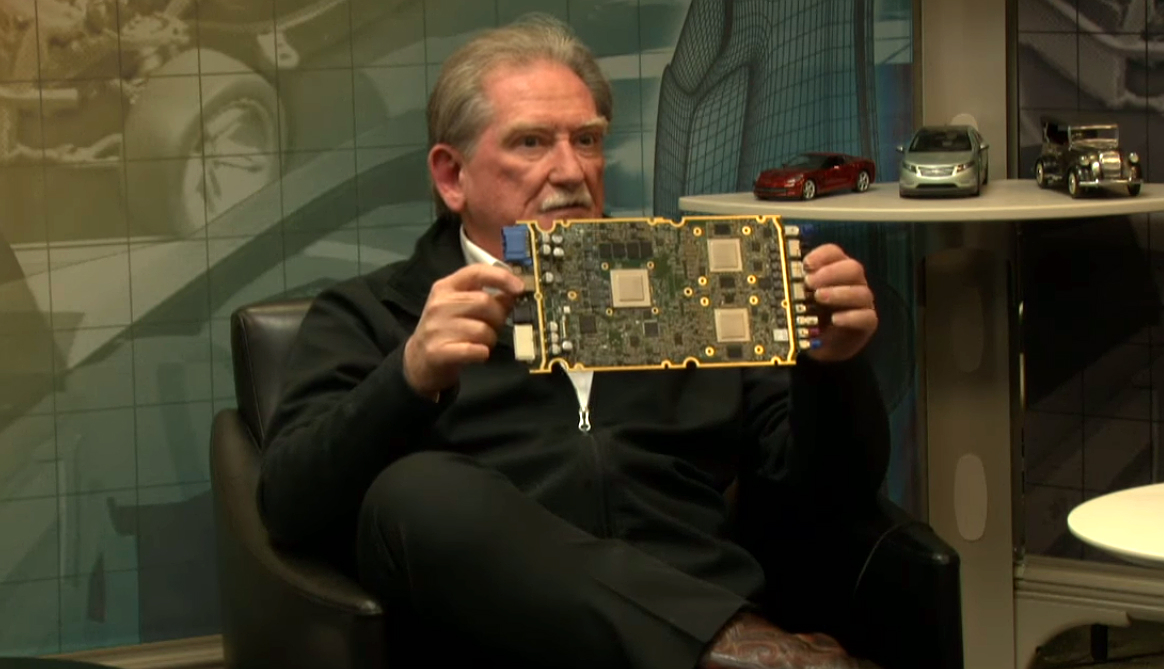
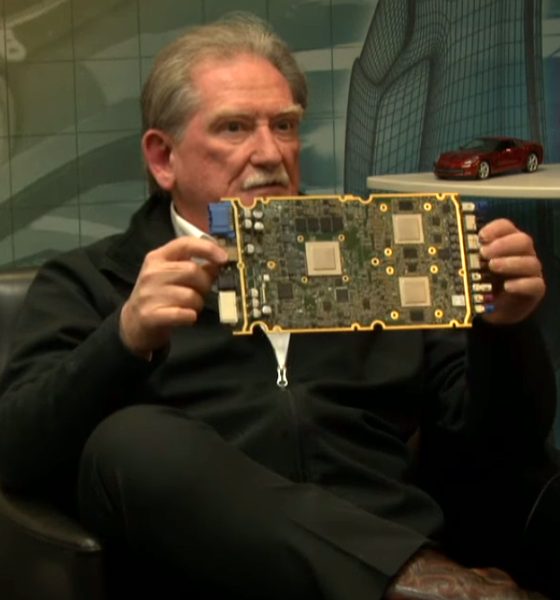
News
Tesla Model 3 modules are comparable to F-35 flight controller, says expert
Tesla Model 3 critic and Detroit veteran Sandy Munro discussed much of the results of his company’s teardown of the electric car in a recent episode of Autoline After Hours. In a lengthy discussion with the network’s panel, Munro explained what he liked about electric car, even gushing at one point and saying that the Model 3 electronics are comparable to a flight controller found on the Lockheed Martin F-35 Lightning II stealth multirole fighter.
In his most recent Autoline interview, Munro noted that his team is almost finished with its analysis and teardown of the electric car. While the Detroit veteran still maintained that he doesn’t have much good to say about the vehicle’s mechanical components, the Model 3’s electronics, battery, and suspension are a completely different matter.
According to Munro, the Model 3’s Automatic Drive Modules are a class above the industry, featuring a design architecture that is usually found on high-end electronics and government-grade machines. Munro even compared the Model 3’s drive module to the flight controller of the F-35, which he is familiar with due to his company’s work for the US military.
“If you look at this thing, this is cellphone technology. This is the technology we would see in really high-end computers, normally for the government. When you look at this, you’re looking at the same kind of technology you’d see on a flight controller for an F-35, and we kind of know a little bit about that too. We do work for the military. Everything here smacks of cellphone technology and defense technology,” Munro said.
The Detroit veteran further stated that Tesla could very well be the leader in battery tech today. According to Munro, prior to tearing down the Model 3, he believed that LG’s battery modules used in the Chevy Bolt EV are the best in the industry. Tesla’s batteries, however, are on a completely new level. Munro was particularly impressed with the differential between each one of the Model 3’s battery blocks.
“We went through there, and the difference was .2 milliamps. Holy, nobody can balance batteries that close. Nobody. Nobody’s ever done that,” Munro said.
Apart from the Model 3’s battery and its electronics, Munro also noted that the suspension for the Model 3 was excellent. The teardown specialist went so far as to state that the person who designed the car’s suspension could easily be an “F1 prince.”

A close-up of the Automatic Drive Module of the Tesla Model 3. [Credit: Autoline Network/YouTube]
“Dr. Jekyll and Mr. Hyde, that’s where they are. And that’s the good thing for the auto industry because if it would have just been a normal car from the mechanical side, from, like I say, the dinosaur technologies; if it came out decent with all the other stuff, they’d mop the floor with everybody,” he said.
Overall, Munro ultimately concluded that the Model 3 is a car that the industry should not dismiss, and that anyone in the automotive business who chooses to ignore Tesla’s progress is doing so at their own peril.
“Anybody that doesn’t look at the electronics on the Tesla (Model) 3 is out of his mind. They’re in peril. This is not some Mickey Mouse outfit that you can just dismiss. Anybody that’s in the car industry that ignores this car is doing it at their own peril,” Munro said.
“This is big stuff. This is not inching up. This is revolutionary, and everybody else is sitting there twiddling their thumbs.”
Sandy Munro is the CEO of Munro & Associates, a company specializing in vehicle teardowns and analysis. Previously featured in two of Autoline’s YouTube segments about the Model 3, Munro took a very critical stance on the electric car’s build quality, calling the Model 3 a “miserable job” and admitting that he “hated” some of the vehicle’s design elements. In a later video about the Model 3’s ride and drive, however, Munro admitted that while the vehicle’s fit and finish were horrible, its handling and performance were great.
Watch Autoline After Hours’ episode featuring Sandy Munro and the general results of his company’s Model 3 teardown in the video below.

News
Tesla is improving Giga Berlin’s free “Giga Train” service for employees
With this initiative, Tesla aims to boost the number of Gigafactory Berlin employees commuting by rail while keeping the shuttle free for all riders.

Tesla will expand its factory shuttle service in Germany beginning January 4, adding direct rail trips from Berlin Ostbahnhof to Giga Berlin-Brandenburg in Grünheide.
With this initiative, Tesla aims to boost the number of Gigafactory Berlin employees commuting by rail while keeping the shuttle free for all riders.
New shuttle route
As noted in a report from rbb24, the updated service, which will start January 4, will run between the Berlin Ostbahnhof East Station and the Erkner Station at the Gigafactory Berlin complex. Tesla stated that the timetable mirrors shift changes for the facility’s employees, and similar to before, the service will be completely free. The train will offer six direct trips per day as well.
“The service includes six daily trips, which also cover our shift times. The trains will run between Berlin Ostbahnhof (with a stop at Ostkreuz) and Erkner station to the Gigafactory,” Tesla Germany stated.
Even with construction continuing at Fangschleuse and Köpenick stations, the company said the route has been optimized to maintain a predictable 35-minute travel time. The update follows earlier phases of Tesla’s “Giga Train” program, which initially connected Erkner to the factory grounds before expanding to Berlin-Lichtenberg.
Tesla pushes for majority rail commuting
Tesla began production at Grünheide in March 2022, and the factory’s workforce has since grown to around 11,500 employees, with an estimated 60% commuting from Berlin. The facility produces the Model Y, Tesla’s best-selling vehicle, for both Germany and other territories.
The company has repeatedly emphasized its goal of having more than half its staff use public transportation rather than cars, positioning the shuttle as a key part of that initiative. In keeping with the factory’s sustainability focus, Tesla continues to allow even non-employees to ride the shuttle free of charge, making it a broader mobility option for the area.
News
Tesla Model 3 and Model Y dominate China’s real-world efficiency tests
The Tesla Model 3 posted 20.8 kWh/100 km while the Model Y followed closely at 21.8 kWh/100 km.
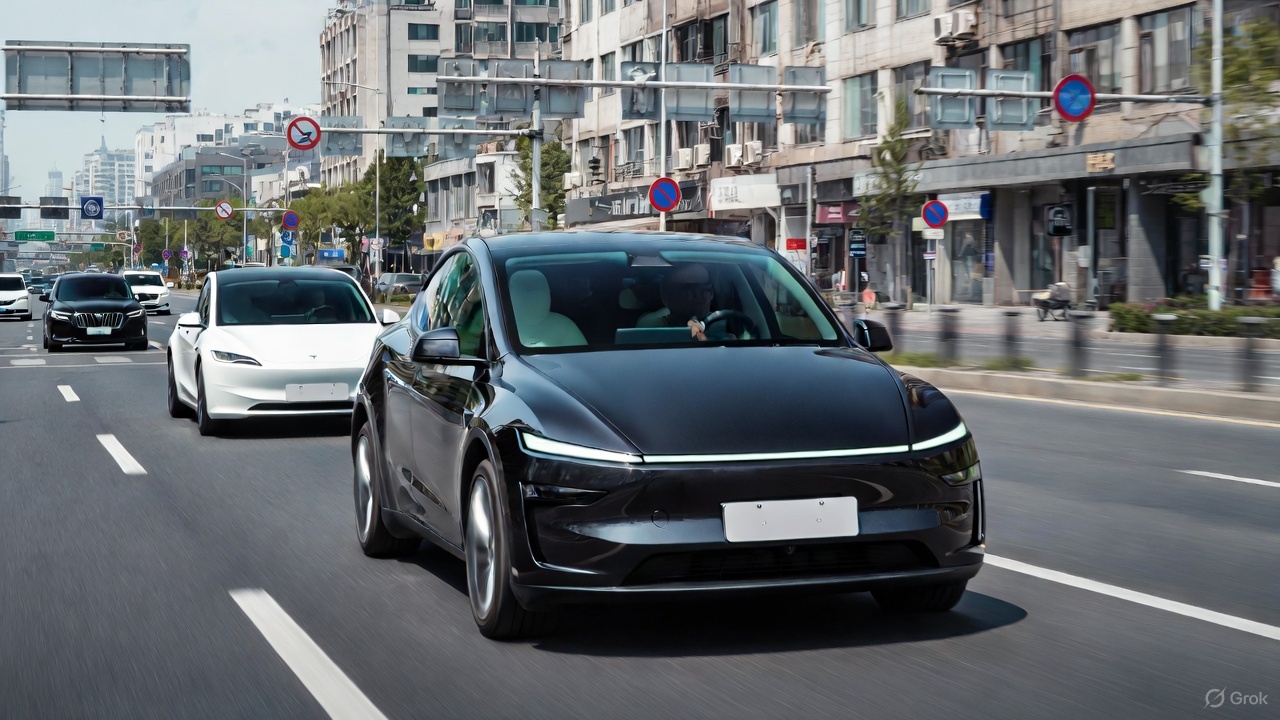
Tesla’s Model 3 and Model Y once again led the field in a new real-world energy-consumption test conducted by China’s Autohome, outperforming numerous rival electric vehicles in controlled conditions.
The results, which placed both Teslas in the top two spots, prompted Xiaomi CEO Lei Jun to acknowledge Tesla’s efficiency advantage while noting that his company’s vehicles will continue refining its own models to close the gap.
Tesla secures top efficiency results
Autohome’s evaluation placed all vehicles under identical conditions, such as a full 375-kg load, cabin temperature fixed at 24°C on automatic climate control, and a steady cruising speed of 120 km/h. In this environment, the Tesla Model 3 posted 20.8 kWh/100 km while the Model Y followed closely at 21.8 kWh/100 km, as noted in a Sina News report.
These figures positioned Tesla’s vehicles firmly at the top of the ranking and highlighted their continued leadership in long-range efficiency. The test also highlighted how drivetrain optimization, software management, and aerodynamic profiles remain key differentiators in high-speed, cold-weather scenarios where many electric cars struggle to maintain low consumption.
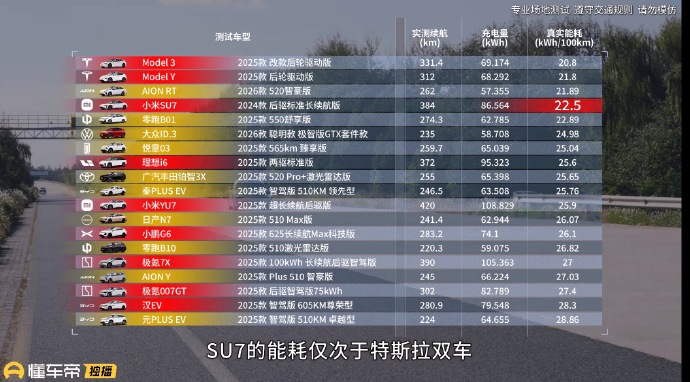
Xiaomi’s Lei Jun pledges to continue learning from Tesla
Following the results, Xiaomi CEO Lei Jun noted that the Xiaomi SU7 actually performed well overall but naturally consumed more energy due to its larger C-segment footprint and higher specification. He reiterated that factors such as size and weight contributed to the difference in real-world consumption compared to Tesla. Still, the executive noted that Xiaomi will continue to learn from the veteran EV maker.
“The Xiaomi SU7’s energy consumption performance is also very good; you can take a closer look. The fact that its test results are weaker than Tesla’s is partly due to objective reasons: the Xiaomi SU7 is a C-segment car, larger and with higher specifications, making it heavier and naturally increasing energy consumption. Of course, we will continue to learn from Tesla and further optimize its energy consumption performance!” Lei Jun wrote in a post on Weibo.
Lei Jun has repeatedly described Tesla as the global benchmark for EV efficiency, previously stating that Xiaomi may require three to five years to match its leadership. He has also been very supportive of FSD, even testing the system in the United States.
Elon Musk
Elon Musk reveals what will make Optimus’ ridiculous production targets feasible
Musk recent post suggests that Tesla has a plan to attain Optimus’ production goals.
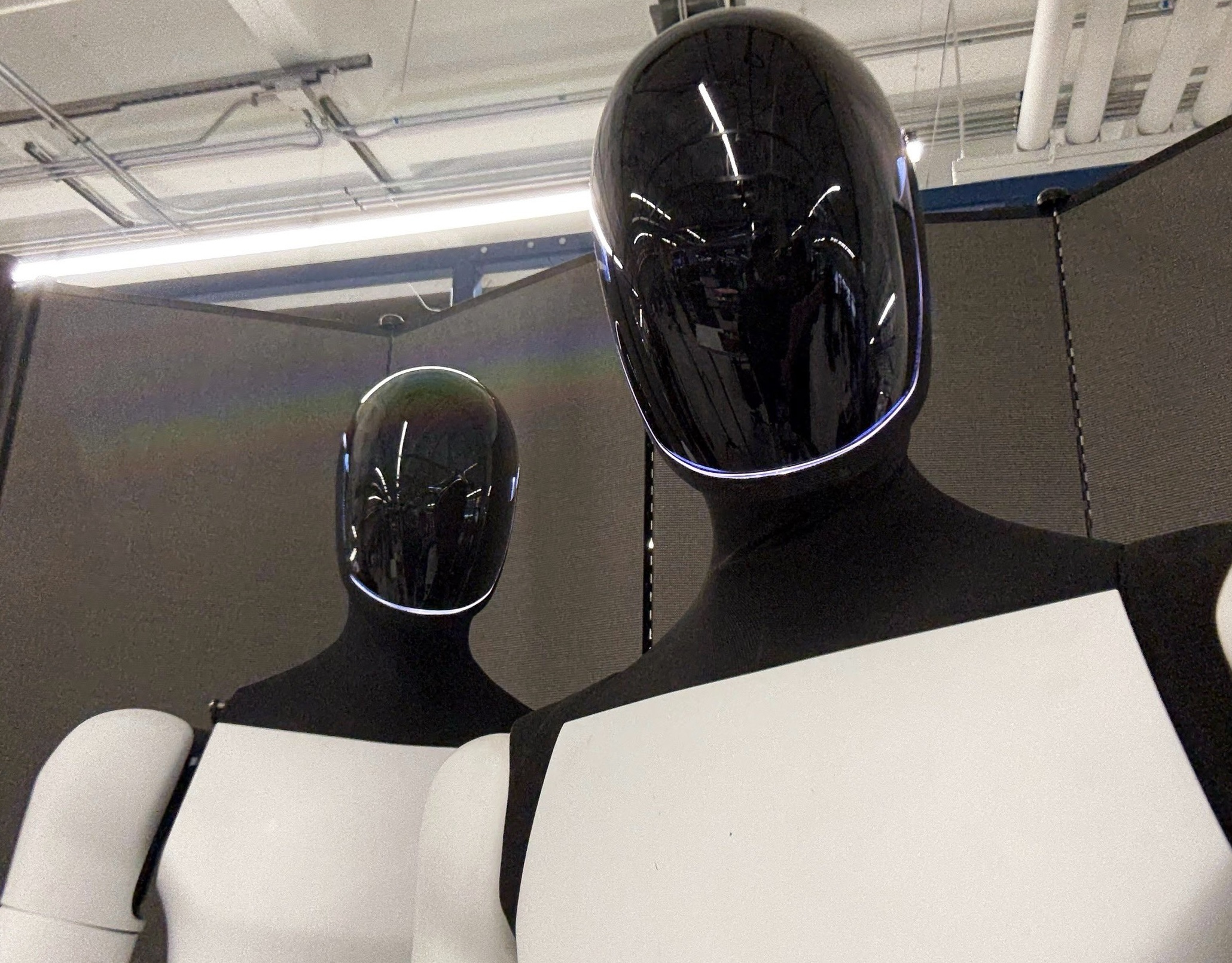
Elon Musk subtly teased Tesla’s strategy to achieve Optimus’ insane production volume targets. The CEO has shared his predictions about Optimus’ volume, and they are so ambitious that one would mistake them for science fiction.
Musk’s recent post on X, however, suggests that Tesla has a plan to attain Optimus’ production goals.
The highest volume product
Elon Musk has been pretty clear about the idea of Optimus being Tesla’s highest-volume product. During the Tesla 2025 Annual Shareholder Meeting, Musk stated that the humanoid robot will see “the fastest production ramp of any product of any large complex manufactured product ever,” starting with a one-million-per-year line at the Fremont Factory.
Following this, Musk stated that Giga Texas will receive a 10 million-per-year unit Optimus line. But even at this level, the Optimus ramp is just beginning, as the production of the humanoid robot will only accelerate from there. At some point, the CEO stated that a Mars location could even have a 100 million-unit-per-year production line, resulting in up to a billion Optimus robots being produced per year.
Self-replication is key
During the weekend, Musk posted a short message that hinted at Tesla’s Optimus strategy. “Optimus will be the Von Neumann probe,” the CEO wrote in his post. This short comment suggests that Tesla will not be relying on traditional production systems to make Optimus. The company probably won’t even hire humans to produce the humanoid robot at one point. Instead, Optimus robots could simply produce other Optimus robots, allowing them to self-replicate.
The Von Neumann is a hypothetical self-replicating spacecraft proposed by the mathematician and physicist John von Neumann in the 1940s–1950s. The hypothetical machine in the concept would be able to travel to a new star system or location, land, mine, and extract raw materials from planets, asteroids, and moons as needed, use those materials to manufacture copies of itself, and launch the new copies toward other star systems.
If Optimus could pull off this ambitious target, the humanoid robot would indeed be the highest volume product ever created. It could, as Musk predicted, really change the world.









